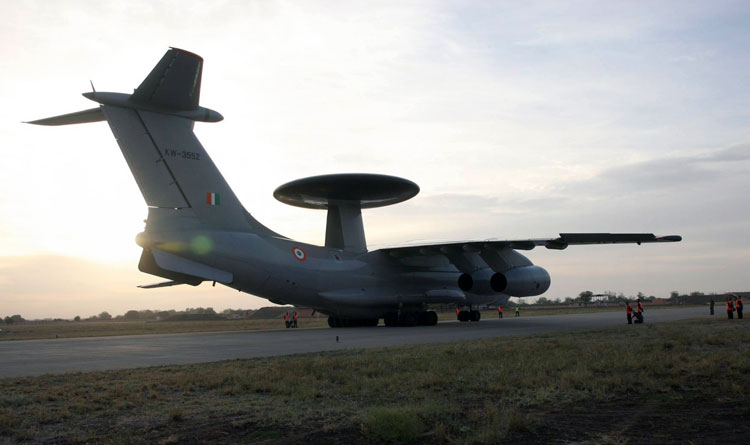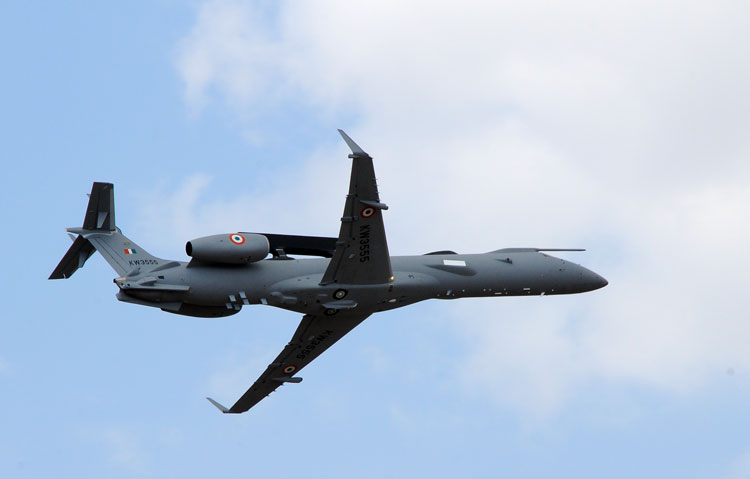INDIAN ARMED FORCES CHIEFS ON OUR RELENTLESS AND FOCUSED PUBLISHING EFFORTS

The insightful articles, inspiring narrations and analytical perspectives presented by the Editorial Team, establish an alluring connect with the reader. My compliments and best wishes to SP Guide Publications.

"Over the past 60 years, the growth of SP Guide Publications has mirrored the rising stature of Indian Navy. Its well-researched and informative magazines on Defence and Aerospace sector have served to shape an educated opinion of our military personnel, policy makers and the public alike. I wish SP's Publication team continued success, fair winds and following seas in all future endeavour!"

Since, its inception in 1964, SP Guide Publications has consistently demonstrated commitment to high-quality journalism in the aerospace and defence sectors, earning a well-deserved reputation as Asia's largest media house in this domain. I wish SP Guide Publications continued success in its pursuit of excellence.
More Eyes in the Sky for IAF
 |
The Author is Former Director General of Information Systems and A Special Forces Veteran, Indian Army |

News reports quoting government sources state that as per a recent discussions on the Airborne Early Warning and Control (AEW&C) Block 2 aircraft to be developed by the Defence Research and Development Organisation (DRDO) under a 10,500 crore project, the six aircraft would be acquired from the Air India fleet and modified to fly with a radar that will give 360-degree surveillance capability to the Indian Air Force (IAF). According to the government source, "The six AEW&C block two planes would be highly capable, more than their predecessor NETRA planes, and provide 360-degree coverage deep inside the enemy territory during missions. The government is expected to clear the project soon."
The IAF has three PHALCON AWACS systems ex import in which the radar is provided by the Israelis whereas the platform used is Russian in the Ilyushin-76 transport aircraft. In addition, two NETRA aircraft provided by the DRDO are also in service with the IAF. The six additional AEW&C block two planes no doubt will be a big boost to the surveillance capabilities of the IAF especially along the borders with China and Pakistan. The media report quoting a government source also says that the project to build the AEW&C system on existing aircraft from the Air India fleet may also mean that India may not buy the six Airbus 330 transport aircraft planned to be acquired earlier from a European firm. The DRDO had earlier planned to build six Airborne Warning and Control System (AWACS) on the Airbus 330 aircraft for which some facilities were planned to be created in Bengaluru.
Media further states that the six aircraft would be sent to a European destination to the original equipment manufacturer (OEM) for modification of the planes for installing the radar and that the project has been planned in a way to promote ‘Make in India’ in defence and ‘Aatmanirbhar Bharat’. It is not clear whether the radar will be imported or indigenous under development 360-degree static radar dome which is an improvement over the radar mounted on NETRA aircraft with 240 degree coverage. If the radar is indigenous why can’t we modify the aircraft in India to fit the radars rather than sending the aircraft to a European destination?
The DRDO’s AEW&C Block-I project has been delayed far beyond the original schedule. Moreover, the Chinese intruded into Eastern Ladakh in April-June this year highlighting the need for urgently boosting surveillance capabilities of the Armed Forces. The idea to use Air India planes apparently is because government is on the verge of privatising Air India and Tata Sons have reportedly submitted an Expression of Interest (EoI) to acquire it. But then all these years why didn’t we look at the planes of Kingfisher Airlines for the purpose with at least 15 of them grounded in India for lack of funds? Did the thought never cross our minds or is there more than what meets the eye? Can we use grounded Kingfisher Airlines planes to meet the IAF’s requirement of 20 x AWACS/ AEW&Cs?

In the 1980’s, DRDO developed an Advanced Surveillance Platform (ASP) programme named ‘Airavat’ based on a Hawker Siddeley HS 748 aircraft to detect targets at extended ranges with all-around azimuth coverage. It was to 50 targets featuring a hybrid navigation system, including both satellite and ground (beacon) based topography, with communication and data links having dual redundant secure systems. However, the project was abandoned after the only test bed aircraft crashed.
Following a study by the IAF and DRDO in 2003, government had approved the project for the development of the AEW&C system by DRDO. Primary responsibility for the overall project including the design, system integration and testing project was with the Centre for Airborne Systems (CABS). The Electronics and Radar Development Establishment (LRDE) was responsible for designing the radar and the Dehradun-based Defence Electronics Application Laboratory was responsible for the Data Link and Communication System for the AEW&CS. The DRDO programme aimed to deliver three AEW&CS aircraft to the IAF. The aircraft platform selected was the Embraer ERJ 145, Three ERJ 145 were procured from Embraer at a cost of $300 million, including the contracted modifications to the airframe. All the three ERJ 145 AEW&CS were aimed to be delivered to the IAF by 2013.
In June 2010, it was reported that the Active Array Antenna Unit (AAAU), developed by CABS was to be integrated into the modified EMB-145 aircraft. First test flight of the system was expected in early 2011. The first modified fuselage platform was handed over to DRDO by Embraer in February 2011. The first fully modified EMB-145i Aircraft with the antenna and its electronic payload made its maiden flight on 6 December 2011 at Embraer facilities in Brazil with many components provided by CABS including the Active Electronic Scanning Antenna (AESA) Radar Antenna. Some sensitive advanced systems were replaced with dummy equipment of equivalent size and weight. These were to be integrated later in India following flight certification. Embraer Defence and Security, on August 16, 2012 delivered the first EMB-145 AEW&C to the Government of India, in a ceremony held at Embraer's headquarters in Brazil.
Maiden flight of the second fully modified aircraft was held in April 2012 in Brazil. The necessary mission systems and components including the dummy AAAU (Active Antenna Array Unit) were successfully fitted onboard the Embraer EMB-145i aircraft. The first fully modified aircraft landed at CABS on August 22, 2012. IAF took delivery of the second NETRA AEW&C on 11 September 11, 2019. The third Embraer platform was meant to remain with DRDO but now DRDO reportedly is looking at the option of selling the aircraft to a foreign customer.
In April 2019, DRDO proposed an upgraded Netra AEW&CS based on Airbus C295 for the IAF as these planes support a static radar dome configuration. DRDO wants Airbus to act as a common platform between the planar array radar already in use with limited 240-degree coverage and the under development 360-degree static radar dome.
Finally, the focus must be to provide the IAF with maximum surveillance capabilities. The IAF reportedly wants a mix of 20 AWAC/AEW&CS. These being prime targets by the enemy certainly need redundancy.





